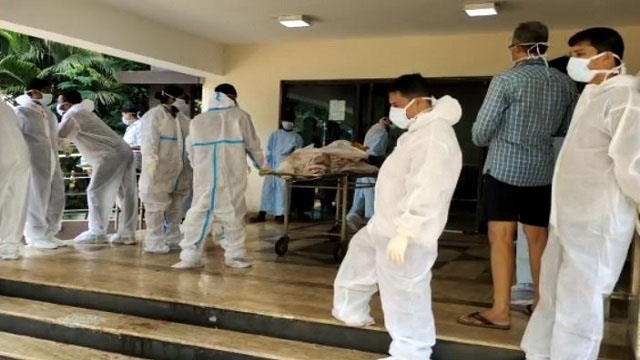Bhubaneswar: A total of 123 dead bodies of the Odisha train tragedy have been received by AIIMS Bhubaneswar by Monday that is June 5, 2023.
It is to be noted that out of the 123 bodies that were received as many as 40 dead bodies have been identified and handed over to their families.
An album has been prepared by the government to record the deaths and help the relatives of the deceased to identify the bodies and then take them.
Here is and official link to the album that has been released by AIIMS Bhubaneswar:
CLICK HERE FOR THE ALBUM
By taking a looking at the album, the family members will be able to recognize their relatives. People from different states have come to AIIMS to search for their relatives, say reliable reports.
The people reaching AIIMS Bhubaneswar shall be given all possible support from the hospital to identify and take away the bodies of their relatives. The treatment of those injured is also underway at full pace.
The above information was provided at a media briefing by the Director of AIIMS Bhubaneshwar, Ashutosh Biswas.
The bodies that have reached Bhubaneswar have been kept at the following hospitals, namely:
A. AIIMS, Bhubaneswar
B. AMRI, Bhubaneswar
C. SUM Hospital, Bhubaneswar
D. Capital Hospital, Bhubaneswar
E. KIMS Hospital, Bhubaneswar
F. Hi-Tech Hospital, Bhubaneswar
The photos of the unidentified bodies are also available in the website of State Government: www.bmc.gov.in
All concerned are requested to Contact Railways in the Following Helpline Numbers for any assistance:
Bhubaneswar- 0674 – 2534027
Cuttack- 8455889917
Khurda Road- 0674 – 2492245 & 8455887999
State Government- 1929
It is worth mentioning that the entire world has mourned the terrible Odisha train tragedy that occurred at Bahanga station in Balasore district of Odisha on Friday evening. In this accident as many as 275 people have lost their lives and at least 1175 people have been injured.
Meanwhile, restoration work is underway at the site where the horrific train accident took place. More than 7 Poclain Machines, 2 Accident Relief Trains, and 3-4 Railway and Road Cranes have been deployed for early restoration.
